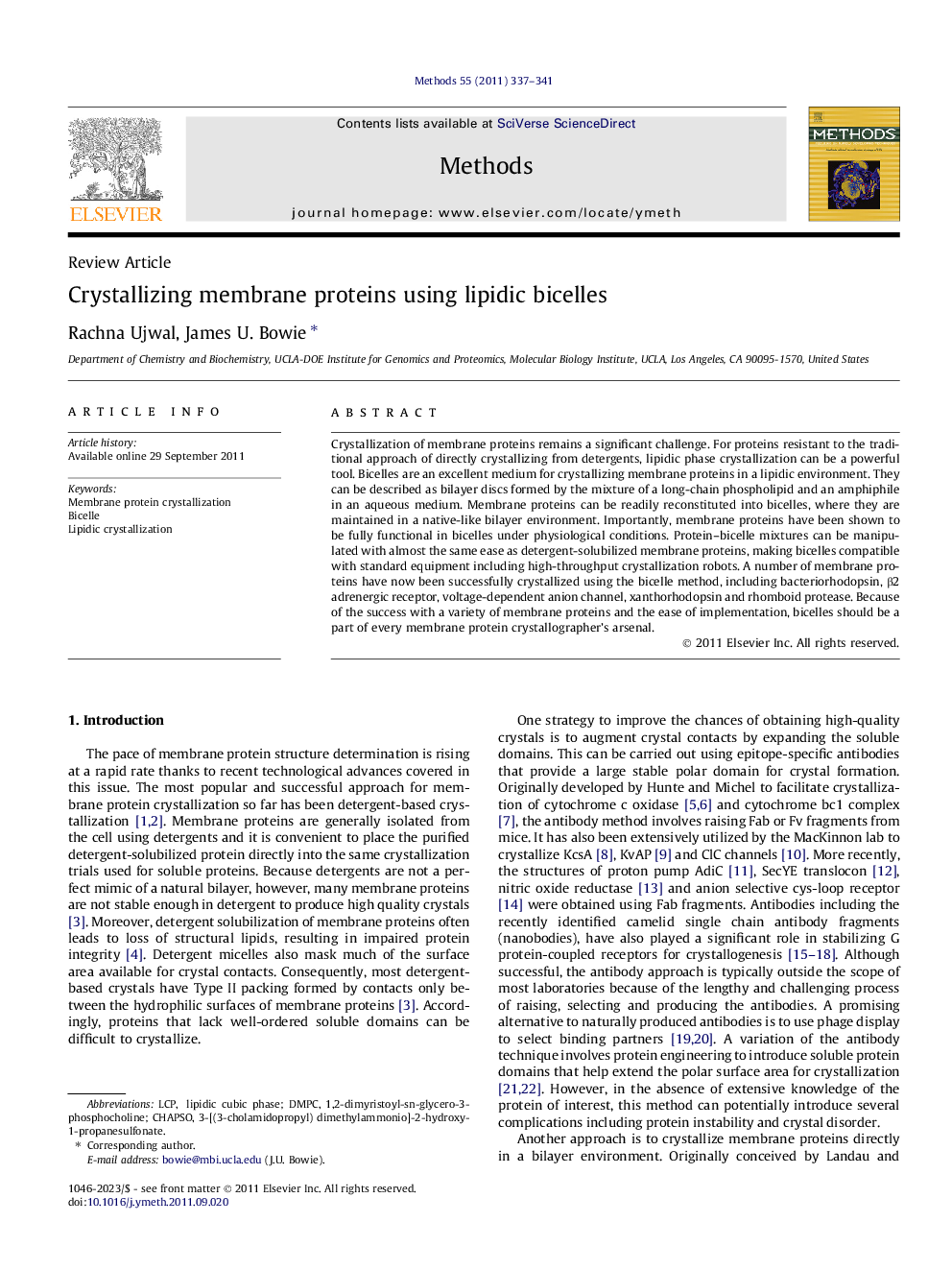| Article ID | Journal | Published Year | Pages | File Type |
|---|---|---|---|---|
| 1993706 | Methods | 2011 | 5 Pages |
Crystallization of membrane proteins remains a significant challenge. For proteins resistant to the traditional approach of directly crystallizing from detergents, lipidic phase crystallization can be a powerful tool. Bicelles are an excellent medium for crystallizing membrane proteins in a lipidic environment. They can be described as bilayer discs formed by the mixture of a long-chain phospholipid and an amphiphile in an aqueous medium. Membrane proteins can be readily reconstituted into bicelles, where they are maintained in a native-like bilayer environment. Importantly, membrane proteins have been shown to be fully functional in bicelles under physiological conditions. Protein–bicelle mixtures can be manipulated with almost the same ease as detergent-solubilized membrane proteins, making bicelles compatible with standard equipment including high-throughput crystallization robots. A number of membrane proteins have now been successfully crystallized using the bicelle method, including bacteriorhodopsin, β2 adrenergic receptor, voltage-dependent anion channel, xanthorhodopsin and rhomboid protease. Because of the success with a variety of membrane proteins and the ease of implementation, bicelles should be a part of every membrane protein crystallographer’s arsenal.
